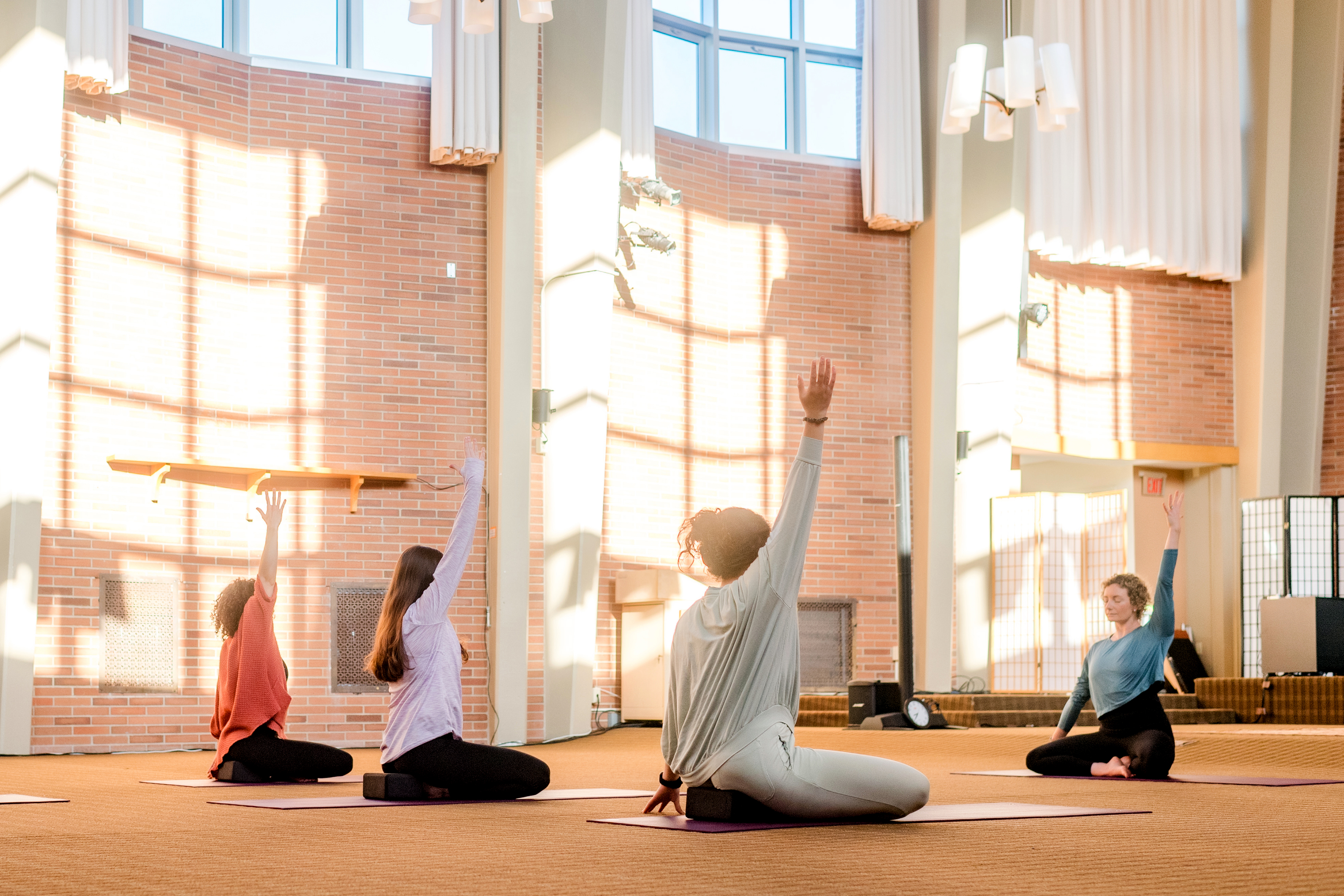5 Practices for Easing the Transition into Daylight Saving Time

It’s time to spring forward! With the start of Daylight Saving Time (DST), our evenings will get lighter—and, as the days get longer, the light will increase again in the morning as well. We can be proactive about making DST an opportunity to reinforce our daily routines and rhythms and enhance our sense of being aligned with nature. These practices from Kripalu faculty and presenters will smooth your transition into spring and help you take advantage of the increased light.
Make time to walk.
According to Ayurveda, kapha dosha, a combination of the elements of earth and water, rules the springtime; its qualities are heavy, slow, dense, dull, soft, oily, and cold. One of the best ways to minimize kapha in the mind and body—and adjust to the time change—is to wake with the sun. “Dawn is ruled by vata dosha and is light, clear, and subtle,” says Erin Casperson
Once you’re up, get moving. At the kapha time of year, the muscles are strongest between 6:00 and 10:00 am, Erin says. Get outside for a brisk walk or do some vigorous yoga to melt away excess kapha. Pause on the way to try this nature meditation from Kripalu Schools teacher trainer Jennifer Reis.
Do yoga that embodies and balances the season.
What better way to welcome the bright energy of the new season than by taking flight in Crow pose? Though this powerful arm balance might seem intimidating at first, it doesn’t have to be daunting. These tips from Kripalu Yoga teacher Susannah Beattie can help you prepare for takeoff.
Another great option: Sun Salutations, which invite heat and mobility to counteract the cold and stable qualities of kapha. They’re a great way to get the circulation and lymph moving first thing in the morning.
Practice Kapalabhati.
Energizing breathing practices, such as Kapalabhati, the Skull-Shining Breath, are excellent for offsetting the indications of excess springtime kapha—lethargy, sluggishness, lack of motivation, water retention, or congestion, says Kripalu Schools faculty Larissa Hall Carlson. Kapalabhati circulates prana and stimulates circulation, “leaving you feeling warm, light, clear, and alert,” says Larissa.
The belly-pumping action of Kapalabhati is great for stimulating agni (digestive fire), which can get sluggish during the damp, heavy days of early spring. It’s also effective for clearing the sinuses—make sure you have a tissue handy. Larissa says early morning (on an empty stomach) is the best time to practice Kapalabhati.
Take a break from electric light.
Artificial light—from an LED light bulb, computer screen, smartphone, or TV—is largely blue-shifted. So when we are surrounded by artificial light in the evening, be it in our work environment or watching late-night TV or Internet surfing, our internal clock is being told that it’s midday.
This disruption in the natural light cycle can lead not only to insomnia, itself an increasingly common disorder, but also to the hormonal and metabolic dysregulation that promotes obesity, diabetes, and cardiovascular disease, says Lisa B. Nelson, visiting Kripalu presenter.
To counteract the added disruption of the time change, do an electricity fast. Spend an electricity-free weekend at home, using only candlelight and firelight—no electric or battery-operated lights, phones, TV or computers. If you have an electric stove, turn off the stovetop light if possible.
Gaze at the sun.
Gazing at the sun (surya dristi) during sunrise or sunset is an ancestral practice that has the effect of synchronizing our biorhythms with the rhythms of the cosmos, and synchronizing the radiance in our heart with that of the sun, according to Kripalu presenter Shiva Rea. The soft light at these times allows our eyes to take in the full spectrum of light frequencies that the pineal gland requires for proper functioning.
“As you gaze at the sun as it rises or sets, feel the rays reaching you from 93 million miles away and recognize that this is the source that generates and regenerates all life,” Shiva says. “Sun gazing is a meditation in itself that is practiced within yoga and around the world. As your eyes drink in the beauty of the moment, all other thought waves naturally rest. This is the state of namaskar, or bowing, to the extraordinary source of fire around which our lives literally revolve.”
